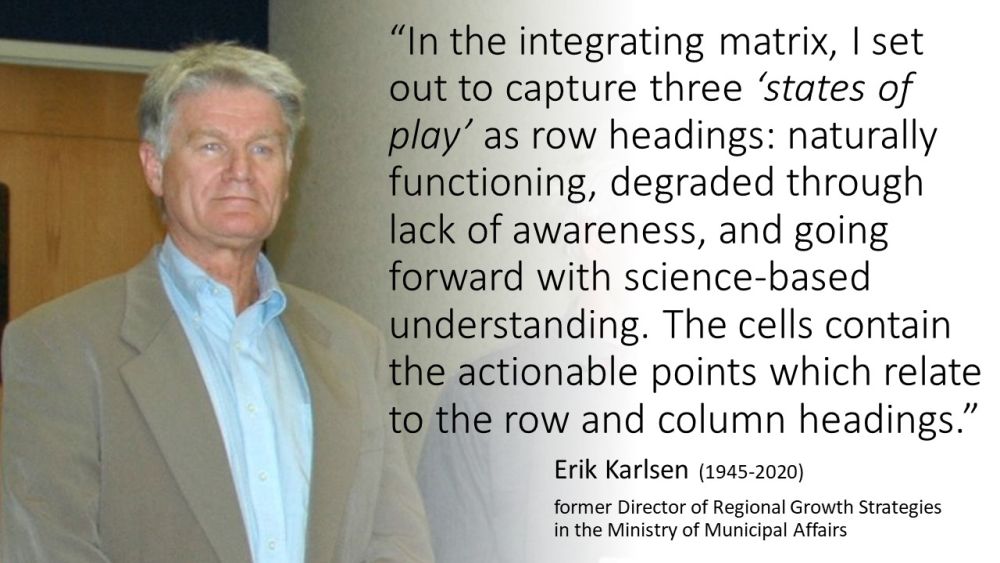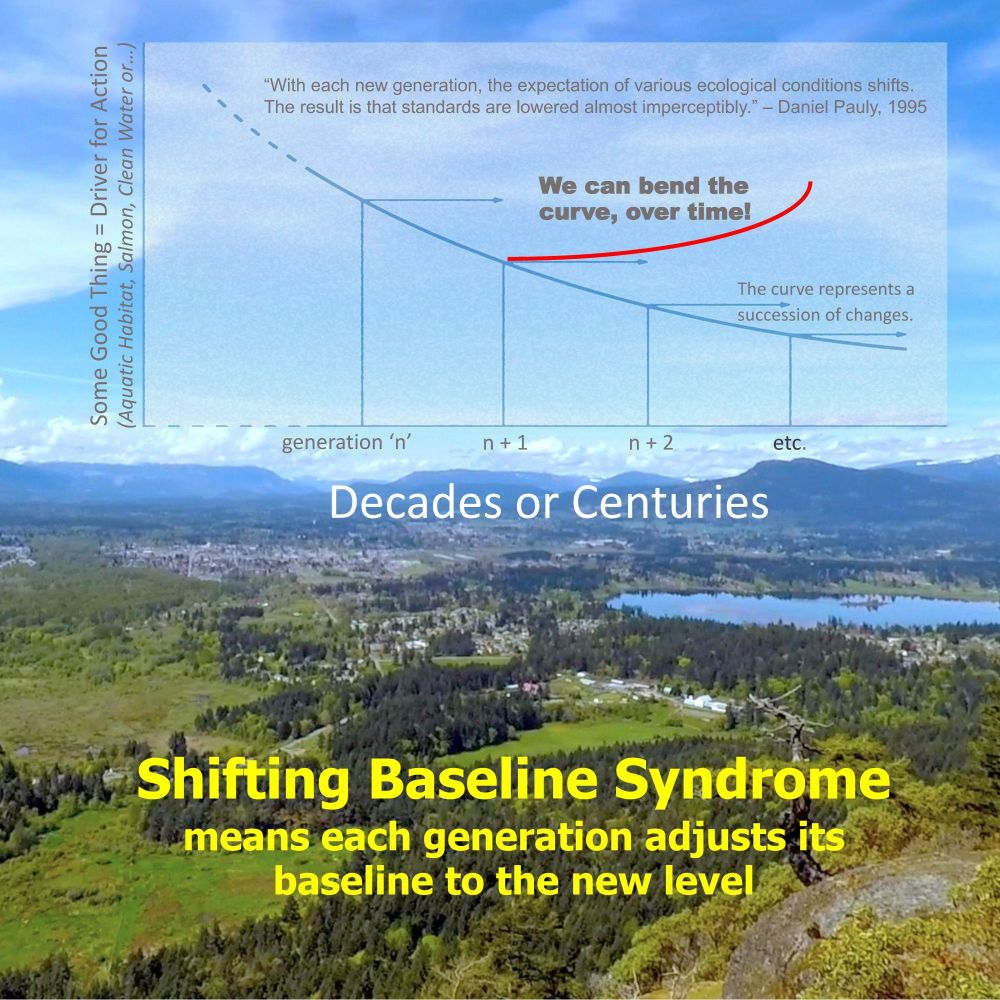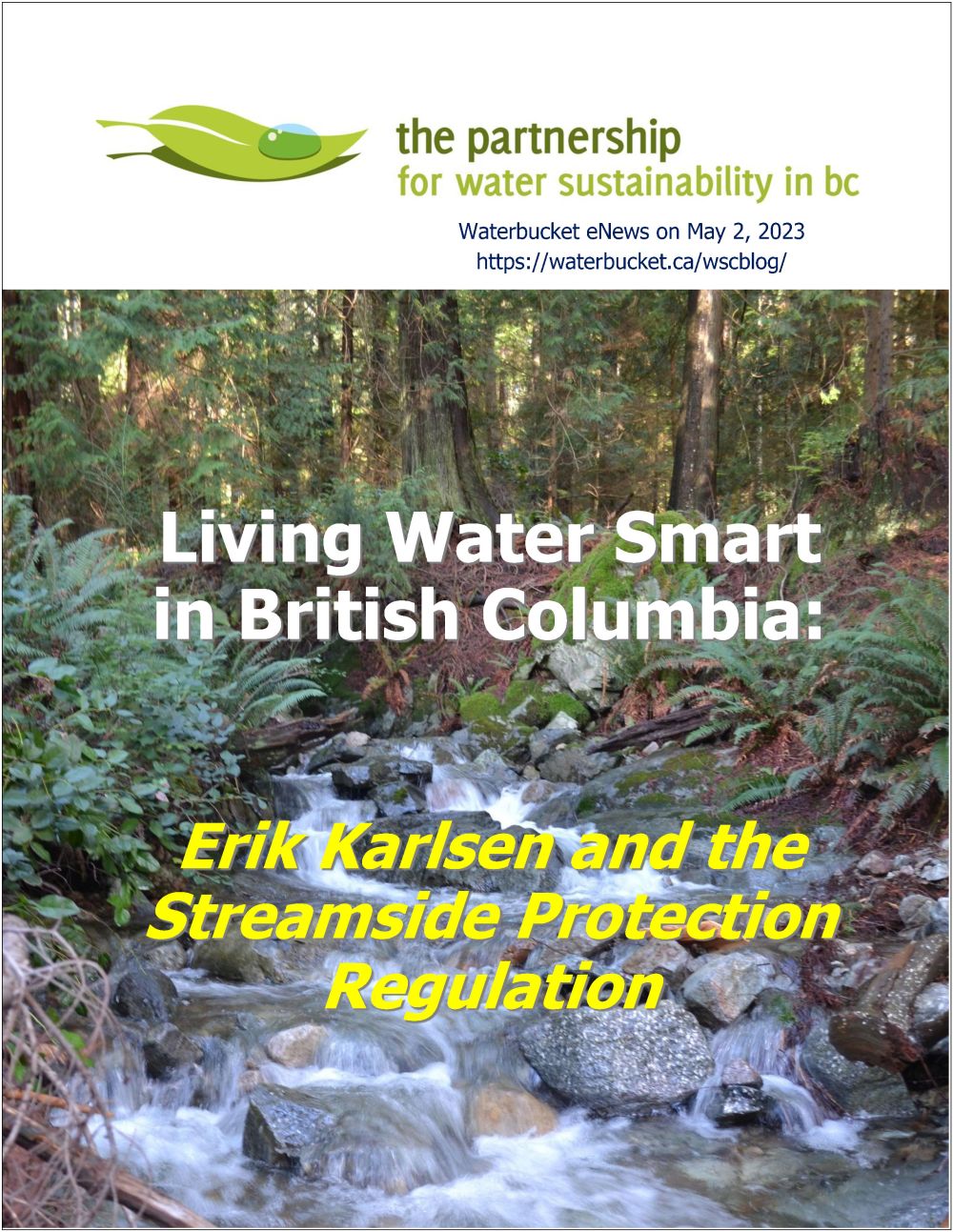DOWNLOAD A COPY OF: “Living Water Smart in British Columbia: Erik Karlsen and the Streamside Protection Regulation” – released by the Partnership for Water Sustainability in May 2023
NOTE TO READER:
Waterbucket eNews celebrates the leadership of individuals and organizations who are guided by the Living Water Smart vision. The edition published on May 2nd 2023 featured the late Erik Karlsen (1945-2020) and highlighted his contributions to streamside protection in British Columbia. Erik Karlsen developed a matrix that integrated the work of Ian McHarg, Daniel Pauly, Richard Horner and Chris May to provide local governments with a decision tool for riparian area protection.

Erik Karlsen and the Streamside Protection Regulation
In this edition, we honour Erik Karlsen, a one-of-a-kind public servant. He was a thought leader and his impact on the world of local government was profound. His influence ripples through time.
The Georgia Basin Initiative, regional growth strategies, and streamside protection regulation did not result from spontaneous combustion.
Erik Karlsen was the catalyst, the instigator, the leader.
Erik Karlsen was a master at communicating concepts. His genius is illustrated in the creative way he integrated the learnings from five renowned thought leaders, namely: Ian McHarg, Daniel Pauly, Richard Horner and Chris May.
Erik Karlsen integrated three foundational concepts to create a decision tool
In 1969, the legendary Ian McHarg published his seminal book, Design With Nature. He was one of the most influential environmental planners and landscape architects of the 20th century. With release of the Water Sustainability Action Plan fof British Columbia in 2004, a ‘design with nature’ philosophy was embedded in the branding for green infrastructure, rainwater management and water sustainability in BC.
In 1995, UBC’s Daniel Pauly wrote a short but impactful article titled the Shifting Baseline Syndrome. This concept is a driver for intergenerational collaboration. Environmental baselines shift when successive generations of planners, engineers, and decision-makers do not have an image in their minds of the recent past. Pauly described how a lack of understanding plays out as a ‘failure to notice change’.
In 1996, the University of Washington’s Richard Horner and Chris May published seminal research that correlated land use changes with the impacts on stream condition. They identified and ranked four limiting factors in order of consequence from an ecological perspective. This ranking is the Road Map for Protecting Stream System Integrity.

“We can bend the curve upwards,” Erik Karlsen would state with conviction
An inter-generational outcome
Erik Karlsen hoped that local governments would apply the understanding embedded in the matrix to “bend the curve” upwards. He believed that restoring a desired watershed and stream condition is an inter-generational responsibility and obligation.
“Communities and successive generations of their elected representatives and staffs must commit and recommit to restoring functional watersheds and streams. When they do, we will be successful in achieving this inter-generational outcome,” Erik Karlsen would say again and again.
Fast forward to the present
The “integrating matrix” is a foundation piece for EAP, the Ecological Accounting Process, which is a pillar for asset management that protects and restores riparian area integrity.
DOWNLOAD A PDF COPY: https://waterbucket.ca/gi/wp-content/uploads/sites/4/2023/04/Erik-Karlsen_integrating-matrix_2015.pdf
TO LEARN MORE:
To read the complete story, download a PDF copy of Living Water Smart in British Columbia: Erik Karlsen and the Streamside Protection Regulation
DOWNLOAD A COPY: https://waterbucket.ca/wcp/wp-cont



